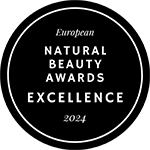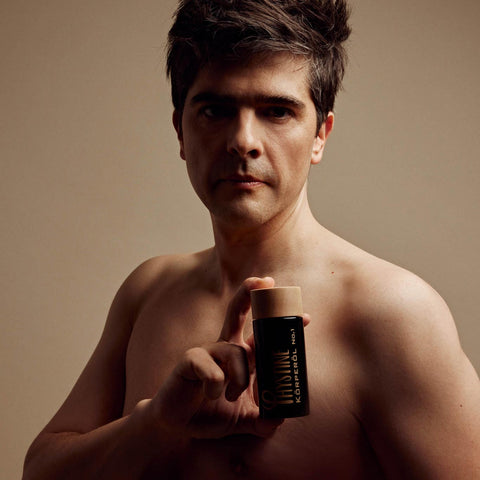It itches and burns. You want to scratch yourself all the time. Red rashes are mixed with severe itching and cracked skin. Neurodermatitis, also called atopic dermatitis (AD), is a very common, non-infectious skin disease. The first signs of neurodermatitis-prone skin can be curbed with natural care products in order to reduce or even prevent unpleasant neurodermatitis flare-ups.
In this article you will find out what indications indicate the chronic skin disease, where it comes from and how you can counteract it (preventively) with natural skin care.
What is neurodermatitis?
Neurodermatitis is a chronic skin disease that can affect all age groups. But while only 1.5 - 2% of adults suffer from it, atopic dermatitis can be observed in 10 - 15% of children up to the age of 7. When the disease breaks out, the skin is inflamed - sometimes over large areas - and red, flaky and itchy eczema develops in these areas. Since atopic dermatitis occurs in episodes, those affected usually also have symptom-free phases. Even if the skin is prone to neurodermatitis, the disease can be counteracted with certain remedies and methods.

How do you recognize neurodermatitis?
Neurodermatitis has a number of symptoms. Externally, a change in the outer layer of skin (= epidermis) is particularly visible in the skin disease. Those affected mainly suffer from very dry, cracked and inflamed areas of skin that are red and sometimes crusted with blood. The rashes can develop at any age and on the entire body. The damaged skin barrier is usually accompanied by severe itching, which often leads to the destruction of the skin structure through scratching. A vicious circle for the skin begins.
Atopic dermatitis can lead to a number of accompanying diseases, which are not only apparent on the outside. Internally, neurodermatitis can, for example, promote allergies and even allergic asthma and also psychological stress.

Triggers and causes of neurodermatitis
Human skin has a natural protective layer, the so-called epidermis, which acts as a barrier against fat and water loss and at the same time prevents the penetration of unwanted germs. An intact skin barrier is overgrown by a healthy combination of bacteria and fungi.
In neurodermatitis sufferers, the skin barrier is damaged and the protective function is no longer sufficient due to a lack of protective skin fats. Therefore, there is a greater susceptibility to infection and the skin becomes inflamed. Allergens, house dust mite particles, microbes or other pests can more easily penetrate the human body through the skin and promote allergic sensitization. The result is annoying allergies. In addition, in skin affected by neurodermatitis, the functions of blood circulation, perspiration and temperature regulation are often no longer intact.
The lack of protective skin oils is primarily caused by three complex factors: genetics, immune system and environmental factors or external influences.
While there is little that can be done against a family history of the disease, the other two factors for atopic dermatitis can certainly be influenced. There are a number of trigger points that can be crucial for the onset of neurodermatitis. For example, living space, diet and personal care have a major impact on genetically predisposed skin.
(Natural habitat
Dry climates or low exposure to UV light can promote the skin disease. Living in the city can also be fatal to your skin. In return, salt water has a good effect on neurodermatitis. But you should also pay attention to the substances in the immediate surroundings. Aggressive acids, bleaches and solvents can hide in detergents, cleaning products or other items and cause long-term damage to the skin barrier. Make sure you have a healthy living environment and products that are free of harmful substances and kind to the skin.
(Healthy eating
For skin prone to neurodermatitis, a healthy and proper diet is often a good approach to alleviate the condition. Sugar and unsaturated fatty acids have been proven to promote various inflammations in the body. Avoiding these and allergy-causing foods could be an important starting point for the prevention of chronic skin diseases.
The supplementation of strong, natural radical scavengers such as astaxanthin, a natural carotenoid that is found in plants, among other things, can also have a positive effect on the inflammatory processes in the body and on the skin.
(Proper) skin care
Skin care is a central factor in the prevention and treatment of neurodermatitis. Since many conventional care products contain water as the main component and chemical substances, the skin is permanently dried out and the protective barrier is damaged.
Surfactants in cosmetic and hygiene products can not only irritate the skin, but also promote drying out as they leach the natural oils from the skin. This in turn can promote neurodermatitis and the associated flare-ups.

Dry, red, itchy hand
Child, 2 years - day 0

Day 2 after starting use
with the PHYSTINE care set
Natural skin care for skin prone to neurodermatitis
If the skin is prone to neurodermatitis, appropriate (preventive) skin care is particularly important. Already irritated and dry skin should be treated with water-free and selected care products. In order to keep the skin barrier healthy or regenerate and at the same time protect it from drying out, the care products should be chosen specifically to suit the skin's current needs.
PHYSTINE products are not only free of chemical and skin-irritating ingredients, but also contain only natural plant oils, extracts and waxes. The natural purity of PHYSTINE products ensures the best bioavailability (= absorption) of the natural active ingredients into the skin and body.
For skin prone to neurodermatitis, PHYSTINE recommends different care products or product combinations depending on the current condition of your skin.
Get specialist information with biomedical background knowledge.
Book a free, personal consultation with Lara, the PHYSTINE product developer, here .
An individual care concept will be created for you. Risk-free testing of the products included with the money-back guarantee.
Lara's product recommendations for skin prone to neurodermatitis
Credentials:
Avena-Woods C. Atopic Dermatitis: Focusing on the Patient Care Strategy in the Managed Care Setting, 2017 Jun;23(8 Suppl):S115-S123.
Kim BE, Leung D YM. Significance of Skin Barrier Dysfunction in Atopic Dermatitis, Allergy Asthma Immunol Res. 2018 May;10(3):207-215.
Kim J, Kim BE, Leung D YM. Pathophysiology of atopic dermatitis: Clinical implications, Allergy Asthma Proc 40:84 -92, 2019.
Torres T, et al. Update on atopic dermatitis, Acta Med Port 2019 Sep;32(9):606–613.




























